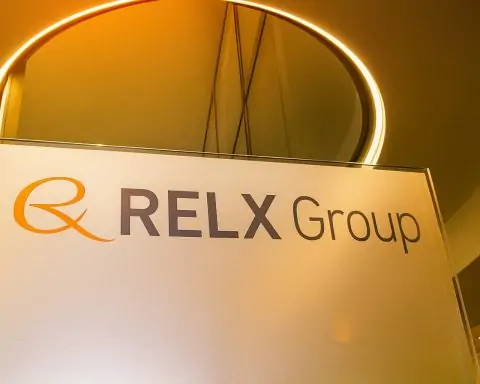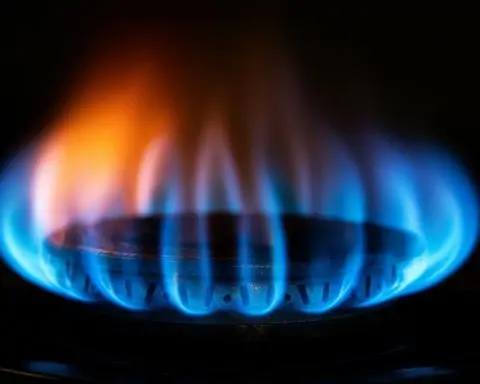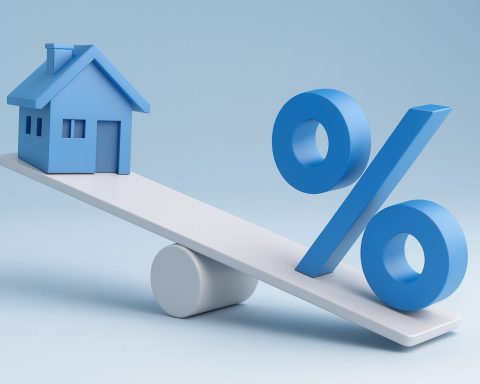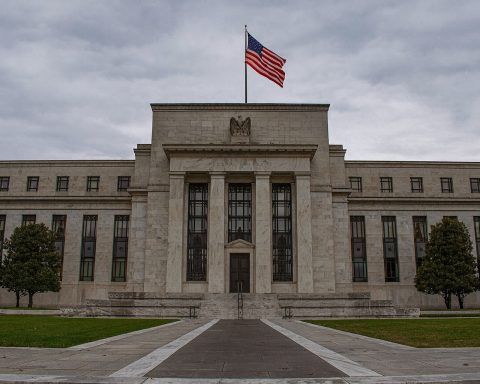- No Down Payment or PMI: VA loans allow 100% financing for qualified veterans (no required down payment) and never require private mortgage insurance [1], unlike FHA or conventional loans.
- Funding Fee: Borrowers typically pay a one-time funding fee (about 2.15% on first-use purchase loans, up to 3.3% on repeat use) [2]. Disabled veterans (and other exempt groups) pay no funding fee, helping keep costs low.
- Who Qualifies: Available to veterans, active-duty service members, qualifying National Guard/Reserve members, and certain surviving spouses [3]. Service requirements are 90 days (wartime) or 181 days (peacetime) active duty (longer for Guard/Reserves), or 6+ years of Guard/Reserve.
- Huge Program Size: The VA loan program now guarantees ~3.7 million home loans [4]. In early 2025, VA purchase lending is up ~10% year-over-year (FY25 vs FY24) and total VA loan volume surged 45% over 2024 [5] – fueled by young veterans (Gen Z VA use +38%) [6].
- New VA Law: The bipartisan VA Home Loan Program Reform Act of 2025 (H.R. 1815, signed July 30, 2025) creates a “partial claim” relief program for veterans behind on payments [7] [8]. About 70,000 VA borrowers are over 90 days delinquent, and this law gives them a safety net to catch up (by pausing delinquency in an interest-free subordinate lien) [9] [10]. It also bolsters homelessness prevention funds.
- Interest Rates Today (10/31/2025): 30-year fixed VA rates average about 6.05% [11] (slightly down from 6.08% a week earlier). For comparison, FHA 30-year loans average ~5.76% [12] and conventional 30-year fixed ~6.2–6.3% (6.24% APR) [13]. Despite historically lower VA rates, right now VA loans are comparable to conventional rates.
- Fed Actions & Market Trends: On Oct 29, 2025 the Fed cut its key rate by 0.25% (targeting 3.75–4.00%) [14]. Mortgage rates tumbled to multi-year lows (e.g. Freddie Mac 30-year at ~6.13% on Oct 29) [15]. 10-year Treasury yields fell toward ~4.0% [16], easing mortgage pricing. For the week ending Oct 24, the Mortgage Bankers Assoc. reported a 7.1% jump in loan applications (driven by 9.3% more refinancing) [17], as buyers and vets react to the rate drop.
What Are VA Loans? Eligibility, Benefits & How They Work
VA loans are mortgages guaranteed by the U.S. Dept. of Veterans Affairs. The VA does not lend money itself; it guarantees a portion (up to 25%) of private loans for eligible veterans, reducing lender risk. This guarantee lets lenders offer favorable terms: no minimum credit score is set by VA (though lenders have their standards), no down payment is required, and no PMI. Borrowers pay a one-time funding fee (0.5–3.3% of the loan) to fund the program [18]; disabled vets and certain survivors pay $0 fee.
To qualify, you (or your spouse) must meet service requirements. For example, 90+ days active duty in wartime (or 181+ in peacetime), or 6+ years in the Guard/Reserves, or other conditions [19]. Surviving spouses of fallen service members may also qualify. After securing a Certificate of Eligibility (COE), borrowers apply through VA-approved lenders. VA loans can be used to purchase or refinance primary residences (including condos and some rural homes). The VA typically limits VA loans to owner-occupied homes only.
Key benefits:
- 100% financing (0% down). Lenders can make 100% loans since VA guarantees them.
- No PMI: VA loans don’t charge private mortgage insurance, ever [20]. This can save borrowers hundreds monthly versus FHA or conventional loans with PMI.
- Flexible Credit: VA loans often accept borrowers with lower credit scores and limited cash reserves, making them accessible to many vets.
- Funding Fee Waivers: If you get VA disability compensation (or are a surviving spouse of a disabled veteran), the funding fee is waived [21].
How it works: The VA guarantees a fixed-dollar amount of the loan (not a percentage); borrowers must still qualify on income. If a borrower defaults, the VA will reimburse the lender for the guaranteed portion (up to 25%). If fully delinquent, veterans may apply for the partial claim assistance established in 2025: VA can advance delinquent payments as an interest-free loan, letting veterans catch up without losing their home [22] [23]. Under this system, when the home is sold or refinanced, the veteran repays the partial claim balance.
Recent News & Market Updates (Late Oct 2025)
Government Shutdown: A U.S. government shutdown began Oct. 1, 2025. However, VA lending largely continued uninterrupted. Industry sources report appraisals, loan processing, and COE issuance were not halted; 97% of VA staff continued working [24]. Lenders say veterans can still buy or refinance with VA benefits. The main impact was on economic data releases (e.g. October CPI/jobs were delayed), making Fed decisions more uncertain [25].
Fed Rate Cut (Oct 29): As widely expected, the Fed cut its federal funds rate by 25 basis points to 3.75–4.00% [26]. This was the second cut of 2025 (after September). Officials noted a “data blackout” due to the shutdown, but judged that the economy could afford easing to support jobs [27] [28]. Markets reacted with a surge in equities (banks +4–5% on Oct 29 [29]) and a drop in bond yields.
Mortgage Rate Movements: By Oct 31 the 30-year mortgage averaged ~6.1%, down from ~7% earlier in 2025 [30]. Several daily rate trackers (Zillow, Mortgage News Daily) briefly showed VA/FHA rates near 6% APR. The drop was driven by falling Treasury yields (10-year near 4.0%) [31] and eased inflation pressures. Despite the cut, experts note mortgage rates remain “stubbornly high around ~6.2%” [32] relative to historical lows – a relief from peaks but well above the 3% era.
VA Loan Demand: VA loan uptake is strong. According to the VA’s own data (via Veterans United), VA purchase lending is up ~10% in FY2025 vs FY2024, with a 45% jump in total VA loan volume and 150% increase in refinances [33]. The surge is led by young veterans – Gen Z service members’ VA purchases rose 38% [34]. Experts at VA lenders credit features like 0% down and no PMI in this challenging market [35].
Policy & Regulatory Changes
VA Home Loan Program Reform Act (2025): In July 2025 Congress passed (and the President signed) landmark VA lending reforms (H.R. 1815) [36]. Key provisions include:
- Partial Claim Program: Officially replaces the old VASP foreclosure-avoidance plan with a streamlined “partial claim” loss-mitigation tool [37]. Veterans over 90 days delinquent on their VA mortgages can now access an interest-free advance (up to the arrearage) attached as a junior lien. This aligns VA’s workout tools with FHA/USDA and “provides a more consistent and effective solution” for distressed borrowers [38].
- Avoiding Foreclosure: The VFW and other advocates applaud that the law “will prevent thousands of veterans from foreclosing on their homes by providing a partial claim option” [39]. DAV leadership notes it will be “a crucial safety net for veterans struggling with their VA-backed mortgages” [40].
- Homelessness Prevention: The act increases funding for veterans’ homeless assistance and mandates VA develop strategies for foreclosure avoidance. It also requires lenders to inform veterans of legal representation rights during default. VA will pay real estate commissions to help vets sell homes if needed.
These changes are effective now as the VA implements the law. While they do not change eligibility or basic loan terms, they bolster safeguards for veterans in financial distress. Other proposed changes (e.g. Purple Heart or disabled vet funding-fee waivers) were already in place by previous law.
Interest Rates & Trends (VA vs FHA vs Conventional)
Current Rates: As of Oct 31, 2025 Bankrate reports the average 30-year fixed VA loan interest rate at 6.05% [41]. By contrast, the FHA 30-year rate averaged 5.76% [42], and conventional fixed-rate home loans averaged about 6.2–6.3% (APR 6.24%) [43]. This means FHA rates are currently lowest on average (often reflecting their insurance subsidy), with VA and conventional roughly similar. Historically VA loans often had the lowest rates, but recent volatility has evened them out.
Trends: Mortgage rates have been volatile in 2025. After peaking in Jan around 7.8%, they fell to one-year lows after the Fed cut (MBA’s 30-year index was 6.39% on Sept 12 [44]). In late October, multiple data points hinted that rates might keep easing: weaker job reports and inflation helped push Treasury yields down [45] [46]. However, analysts caution we are still in a high-rate era. One expert quipped that without rein in government borrowing, “mortgage rates [may remain] stubbornly high” even as the Fed cuts [47].
Future Outlook: Surveys show most analysts expect continued rate declines. A recent Bankrate poll found 57% of experts thought rates would fall in early November [48]. NAR economists forecast that by 2026, 30-year rates could reach around 6.0%, which would unleash pent-up demand and increase home sales by ~14% [49]. However, with Fed officials publicly split on further cuts [50] [51], the exact timing is uncertain. Industry forecasts (MBA, Zillow, etc.) generally call for rates “staying in the mid-6% range” through 2025, possibly dipping in 2026.
Expert Commentary & Market Outlook
Mortgage and housing experts highlight the relief from recent rate drops. Freddie Mac chief economist Sam Khater remarked that the combination of easing rates, rising inventory, and softer home-price growth is “creating a more favorable environment for those looking to buy a home” [52]. CoreLogic’s Selma Hepp echoed that “lower mortgage rates are a good thing for potential homeowners” as buying power returns [53]. NAR’s Lawrence Yun noted that even a modest rate decline lifts activity: “falling mortgage rates are lifting home sales,” and he predicts any move toward 6% will re-engage many sidelined buyers [54] [55].
From a veterans’ perspective, advocates see hope in both the rate relief and the new law. Joy Ilem of DAV stated the reforms “ensure veterans are not left behind” and give them “critical tools to help prevent foreclosure” [56]. Bob Broeksmit of the Mortgage Bankers Assoc. called the law “a critical step forward in ensuring distressed veteran homeowners have access to a proven and sustainable loss mitigation solution” (MBA quote in [57]).
VA vs FHA vs Conventional:
For a side-by-side snapshot, consider this comparison as of Oct 2025:
| Feature | VA Loan | FHA Loan | Conventional Loan |
|---|---|---|---|
| Down Payment | 0% (none required) | Typically 3.5% minimum | Typically 3–5% (varies) |
| Mortgage Insurance | No PMI/MIP (VA loans never require it) [58] | Upfront ~1.75% + monthly ~0.55–1.05% (for life or long term) | PMI required if LTV >80% (rates vary) |
| VA Funding Fee | 0.5–3.3% one-time (financed into loan); disabled vets exempt [59] | N/A | N/A |
| Eligibility | Service-based (veterans, active duty, Guard/Reserve, surviving spouses) [60] | Any eligible homebuyer (with FHA credit rules) | Any creditworthy borrower |
| Typical 30-yr Rate (Oct 2025) | 6.05% [61] | 5.76% [62] | 6.24% APR [63] |
| Other Benefits | No PMI, more lenient credit; VA pays broker fee up to 1% (reimbursement) | Lower down payment; easier qualification for some borrowers | Usually lowest rates for best credit |
Overall, a VA loan often lets veterans buy sooner (no down, no mortgage insurance) with only the funding fee as a tradeoff. FHA loans help low-down-payment buyers of any status but add mortgage insurance costs. Conventional loans serve those with strong credit and larger down payments and can offer slightly lower rates when borrowers qualify.
Market Data and Financial Trends
- Mortgage-Backed Securities (MBS): On Oct 29, the Fed announced it will end quantitative tightening. It will stop shrinking its MBS portfolio by reinvesting all maturing MBS into Treasuries starting Dec 1 [64]. This move stabilizes demand for MBS, which could help keep mortgage rates from spiking.
- Applications Index: The Mortgage Bankers Assoc. (MBA) reported rising loan demand in late October. Total applications jumped 7.1% in the week ending Oct 24 [65]. Refinance apps surged (as expected with falling rates) and even purchase apps ticked up 4.5%, the first weekly increase in months. This suggests buyers are responding to even modest rate relief.
- Lender Stocks: Mortgage lender and bank stocks rallied on the Fed’s dovish turn. For example, some major bank stocks jumped 4–5% on strong earnings and rate-cut hopes [66]. (By contrast, mortgage originator Rocket Companies has been under pressure in 2025; on Oct 29 it traded near $16, down about 10% from the prior week, reflecting market volatility.)
- Housing Market: Existing-home sales have started to rise slowly. The NAR reported a slight increase in Sept 2025 sales after rates eased, and builder sentiment ticked up. But sales are still near historic lows [67]. Inventory is gradually improving in many markets, giving buyers more choices.
Conclusion
In summary, VA loans remain a powerful option for veterans in the current market. They offer unique benefits (no down payment, no PMI) and come with a new safety net for distressed borrowers thanks to recent legislation [68] [69]. As of Oct 31, 2025, VA loan rates are roughly in line with conventional rates (~6.0%), and lower than FHA’s (~5.8%) on average [70] [71]. Experts forecast a mild decline ahead – NAR’s economists foresee 30-year rates dipping to ~6% by 2026 [72], which would significantly improve affordability. The easing trend is helping buyers: Freddie Mac’s Sam Khater and others note that even these “consistently lower rates” are “creating a more favorable environment” [73].
Veterans eyeing homeownership should shop around and get pre-qualified. Given the VA program’s benefits, a VA mortgage could offer a lower monthly cost than an FHA or conventional loan for the same home value (when accounting for PMI). Moreover, the newly signed VA Home Loan Reform Act provides extra peace of mind that struggling borrowers can access help to avoid foreclosure [74] [75]. In today’s volatile mortgage market, taking advantage of VA loan benefits—while also monitoring further interest rate changes—is sound advice for eligible servicemembers and veterans.
Sources: U.S. Department of Veterans Affairs and legislative releases [76] [77]; Bankrate.com mortgage rate surveys [78] [79]; Reuters, news articles and ts2.tech market reports [80] [81] [82]; Veterans United lending data [83] [84]; expert commentary from DAV, NAR, MBA, etc. [85] [86]. All data cited above reflect conditions as of Oct. 31, 2025.
References
1. www.bankrate.com, 2. www.veteransunited.com, 3. www.bankrate.com, 4. www.dav.org, 5. www.veteransunited.com, 6. www.veteransunited.com, 7. veterans.house.gov, 8. www.dav.org, 9. veterans.house.gov, 10. www.dav.org, 11. www.bankrate.com, 12. www.bankrate.com, 13. www.bankrate.com, 14. www.reuters.com, 15. ts2.tech, 16. ts2.tech, 17. ts2.tech, 18. www.veteransunited.com, 19. www.bankrate.com, 20. www.bankrate.com, 21. www.veteransunited.com, 22. veterans.house.gov, 23. www.dav.org, 24. www.veteransunited.com, 25. ts2.tech, 26. www.reuters.com, 27. www.reuters.com, 28. www.reuters.com, 29. ts2.tech, 30. ts2.tech, 31. ts2.tech, 32. ts2.tech, 33. www.veteransunited.com, 34. www.veteransunited.com, 35. www.veteransunited.com, 36. veterans.house.gov, 37. www.dav.org, 38. www.dav.org, 39. veterans.house.gov, 40. www.dav.org, 41. www.bankrate.com, 42. www.bankrate.com, 43. www.bankrate.com, 44. www.reuters.com, 45. ts2.tech, 46. ts2.tech, 47. ts2.tech, 48. www.bankrate.com, 49. www.nar.realtor, 50. www.reuters.com, 51. www.reuters.com, 52. ts2.tech, 53. ts2.tech, 54. ts2.tech, 55. www.nar.realtor, 56. www.dav.org, 57. veterans.house.gov, 58. www.bankrate.com, 59. www.veteransunited.com, 60. www.bankrate.com, 61. www.bankrate.com, 62. www.bankrate.com, 63. www.bankrate.com, 64. www.reuters.com, 65. ts2.tech, 66. ts2.tech, 67. ts2.tech, 68. veterans.house.gov, 69. www.dav.org, 70. www.bankrate.com, 71. www.bankrate.com, 72. www.nar.realtor, 73. ts2.tech, 74. www.dav.org, 75. www.dav.org, 76. veterans.house.gov, 77. www.dav.org, 78. www.bankrate.com, 79. www.bankrate.com, 80. ts2.tech, 81. ts2.tech, 82. www.reuters.com, 83. www.veteransunited.com, 84. www.veteransunited.com, 85. www.dav.org, 86. www.nar.realtor










